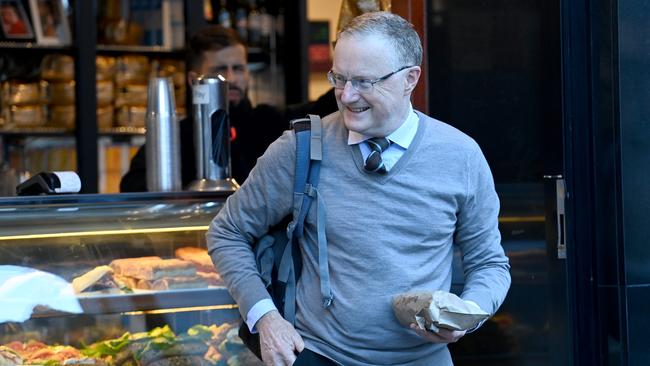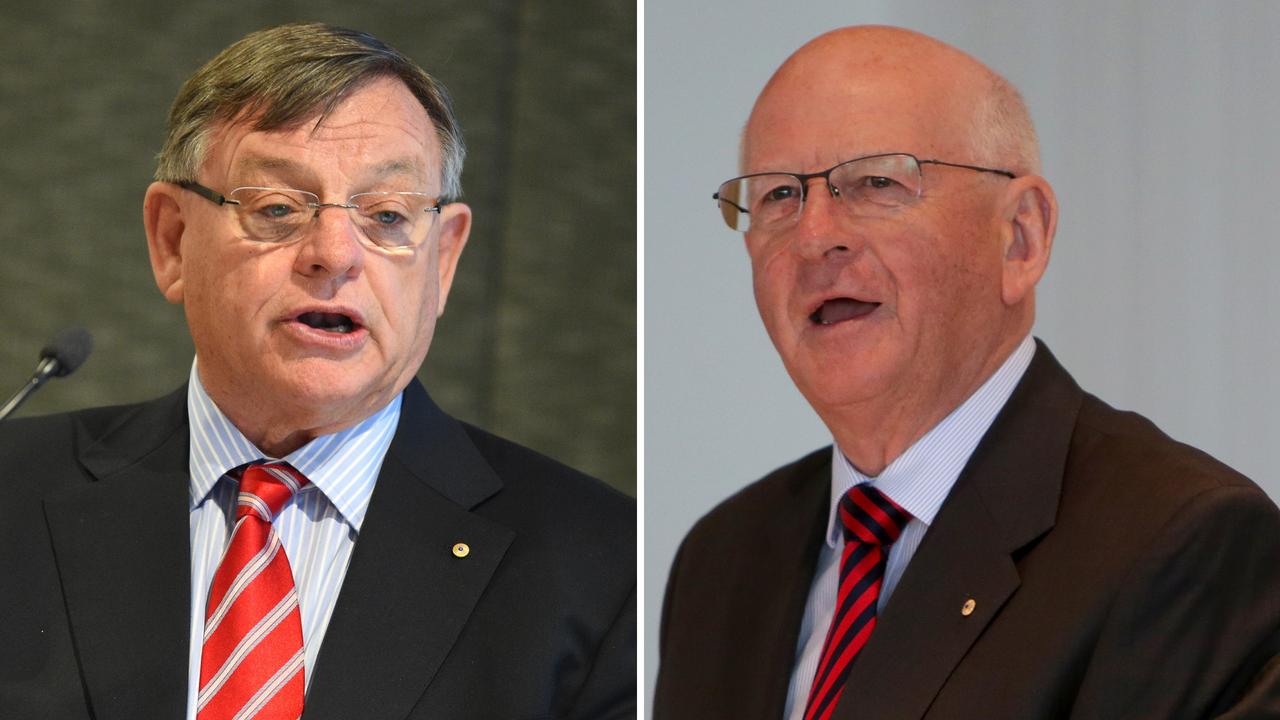More rate pain to come in RBA’s inflation fight

In three consecutive moves, the RBA has taken the cash rate from 0.1 per cent to 1.35 per cent this year. On Tuesday, that number is likely to become 1.85 per cent with an overwhelming expectation among market economists of another 0.5 per cent rise.
It has been a fascinating month of fresh data and fresh politics. The former, the RBA will look at very carefully. The latter is likely to steel some members of the board given Jim Chalmers’ formal announcement of a review into the RBA and Anthony Albanese’s warning to the central bank not to overreach on rates.
Last week inflation marched up to 6.1 per cent for the three months to June 30, driven largely by higher home construction costs and fuel prices. Higher freight costs and supply chain issues meant that goods accounted for almost 80 per cent of the rise in CPI.
The RBA will publish a full set of forecasts on Friday. Last month, RBA governor Philip Lowe said he expected inflation to hit 7 per cent by early September.
In mid-July the unemployment figure fell to a 50-year low of 3.5 per cent. This is 1.7 per cent lower than it was in March 2020 when the pandemic hit, with 225,500 fewer unemployed.
Both inflation and unemployment numbers support a continued effort to get inflation under control with higher interest rates.
On the flip side, the concerns are the housing market and consumer demand.
In his July rate decision statement, Dr Lowe said the board would pay close attention to spending data and pressure on household budgets. He noted that how this influenced household spending behaviour was an ongoing source of uncertainty. And last Thursday’s retail sales figures came in below expectations, suggesting the retail trade is peaking.
Open borders and higher spending on services may account for some of this, but the bigger issue is how higher prices and mortgage rates are affecting consumer demand. Both are of great concern to the government as evidenced by a sober if not sombre economic update from the Treasurer.
The government has downgraded its growth forecast for this year and next by half a percentage point and put peak inflation at 7.75 per cent in the December quarter.
The latest housing figures from CoreLogic show house prices falling at the fastest rate since the 2008 financial crisis.
Until very recently, the loudest criticism of the property market was that it was widening the gap between the haves and the have-nots as asset values soared.
Those values, led by housing in Sydney and Melbourne are now coming back. In Sydney the median house price fell by 2.2 per cent in July and 4.7 per cent for the quarter.
In a speech in July, deputy RBA governor Michelle Bullock spoke to the resilience of the economy and concluded that on balance households with savings buffers were in a good position. Most of the debt was held by high income households. Having a job to service the mortgage was important.
“The way the risks play out will be influenced by the future path of employment growth. This, along with the Board’s assessment of the outlook for inflation, will be important considerations in deciding the size and timing of future interest rate increases,” she said.
It will be enlightening to read what Dr Lowe has to say about house prices and buffers in Tuesday’s statement.
Politically the property market will always be a punter battleground, from access to housing to interest rates and house prices.
In the last fortnight, the Prime Minister weighed into the debate warning to the RBA not to overreach on interest rates. In the same week that the government commissioned an “independent” review into the RBA – this was at best unfortunate.
Last week, RBA board member Ian Harper, speaking in a personal capacity, told Bloomberg that the Australian economy was robust and capable of withstanding further rate increases.
“Is there a danger of recession? Well, of course, there’s always a danger that we can overreach, but it’s not as if we are sitting on some sort of knife edge,” Professor Harper said. “There are issues for us to be thinking about, but I’m not in the camp which says that at any minute the wheels will fall off. You can deal with economic challenges a whole lot easier when you’ve got 3.5 per cent unemployed.”
One third of households have mortgage debt. Inflation affects everyone.
Dr Lowe’s speech at The Australian’s Strategic Business Forum on July 20 was crafted knowing that Chalmers later at the event would formally launch its review.
Dr Lowe’s speech was dominated by the task of returning inflation to within the 2 to 3 per cent band and the importance maintaining the band as part of the RBA’s mandate. That view was strongly endorsed by business leaders.
“The key consideration in the outlook for interest rates is how confident are we that inflation will come back to 2 to 3 per cent over time,” Dr Lowe said.
On Monday research prepared by Monash University revealed that wild weather forecast for coming months could worsen the already grim fresh food shortages in Australia. And continued pressure from energy prices ridicules the prospect of the government’s promised $275 fall in household energy bills by 2025.
This week the market pulled back its view on the peak cash rate from as high as 4.5 per cent to 3 per cent. That change appeared to be driven by the Federal Reserve’s signal last Thursday that it might pause rates after further tightening.
Bringing inflation back from a peak of almost 8 per cent will be painful – and particularly for those fully stretched first home buyers who were encouraged to buy just before the cycle turned.
Productivity reform, even if it occurs, will be too late for the RBA’s inflation agenda.
In any case, so far the government appears to be high tailing it in the opposite direction on reform. It is reducing the powers of the Australian Building and Construction Commission and rolling back legislation on super fund transparency.
Australian Workers’ Union secretary Dan Walton is pushing for default unionisation for any new migrant workers. Laudable as this might sound, it will not encourage business growth or productivity.







At Tuesday’s Reserve Bank meeting inflation pressure will again trump concerns of mortgage stress.